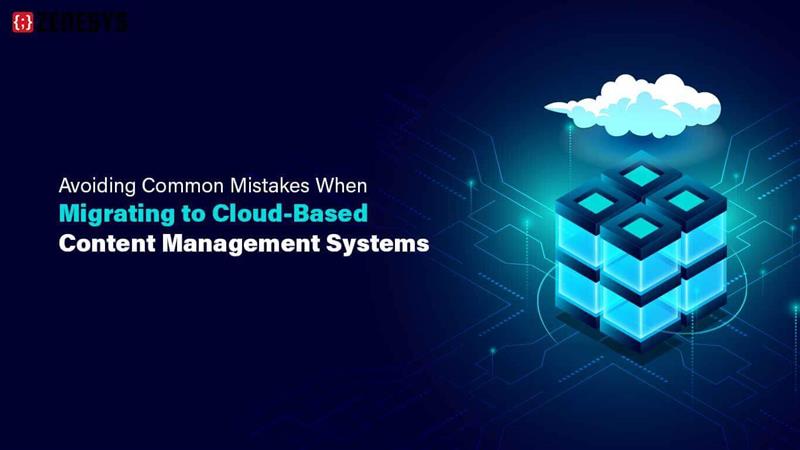


Considering moving your CMS to the cloud or are already in the middle of it, understanding common mistakes and how to avoid them.
“A goal without a plan is just a wish.” This quote by Antoine de Saint-Exupéry perfectly captures the essence of migrating to a cloud-based content management system (CMS).
As more businesses move their content and data to the cloud, the process looks promising but can be riddled with pitfalls. Studies show that 83% of enterprises face data migration failures due to poorly planned cloud strategies (source).
So, if you are considering moving your CMS to the cloud or are already in the middle of it, understanding common mistakes and how to avoid them will save you time, money, and headaches.
Before diving into the mistakes, let’s briefly understand what a cloud-based CMS is. Unlike traditional CMSs that operate on local servers, cloud CMS platforms let you create, manage, and store content in the cloud. This means easier access from anywhere, easier collaboration, and often better scalability. But shifting your entire content infrastructure to the cloud isn’t as simple as copying files—it requires thoughtful planning and execution.
Many companies choose cloud CMS for benefits like:
When you use a cloud CMS, you don’t have to manage physical servers or hardware on your own. This means no worries about buying expensive equipment, fixing breakdowns, or upgrading outdated software.
With cloud-based CMS, scaling your system up or down is simple and automatic. If you suddenly have more traffic, users, or content to handle, the cloud platform quickly adjusts its resources to meet demand.
Since cloud CMS stores content on remote servers accessible via the internet, your team can work from anywhere. Whether you’re in the office, at home, or on the road, you can log in on any device—computer, tablet, or phone—and manage content smoothly.
Cloud CMS platforms usually come with collaboration tools built-in that let multiple people work on the same content simultaneously. Imagine marketing, design, and development teams editing, reviewing, and approving updates in real time.
One big worry when moving content to the cloud is losing data due to server crashes, human errors, or disasters. Cloud CMS addresses this with automated backups and redundancy, meaning your content is stored in multiple secure locations.
When migrating to a cloud-based CMS, there are some common traps companies fall into. I’ve listed these below, along with practical advice to help you steer clear of trouble.
Take time to map out your migration phases, responsibilities, and goals. Talk to your team and get everyone aligned.
Make an inventory of all your data types and interdependencies before migration. Prioritize which data you move first and test for integrity after transferring.
Work closely with your cloud provider to understand their security measures. Set up encryption, multi-factor authentication, and access controls. Also, ensure your migration process aligns with relevant industry regulations.
Evaluate what should stay local and what can be moved. This selective migration reduces risks and tailors cloud use to your needs.
Invest in training your staff or hire cloud-savvy professionals. A collaborative approach between your team and providers leads to better outcomes.
Plan migration in phases, starting with less critical content. Use pilots or test runs to identify issues early and fix them before full deployment.
Test backup and restoration procedures too. Simulate user experiences to verify accessibility and functionality.
Keep detailed records of what was done, why, and how. This will help address issues faster and keep your migration transparent.
Use monitoring tools to track system health, access logs, and costs. Schedule reviews to update processes or tools as needed.
Migrating can get complex, but many organizations find success by partnering with a CMS development company that understands both content and cloud technologies. They bring experience, tools, and best practices that make migration smoother and less stressful.
